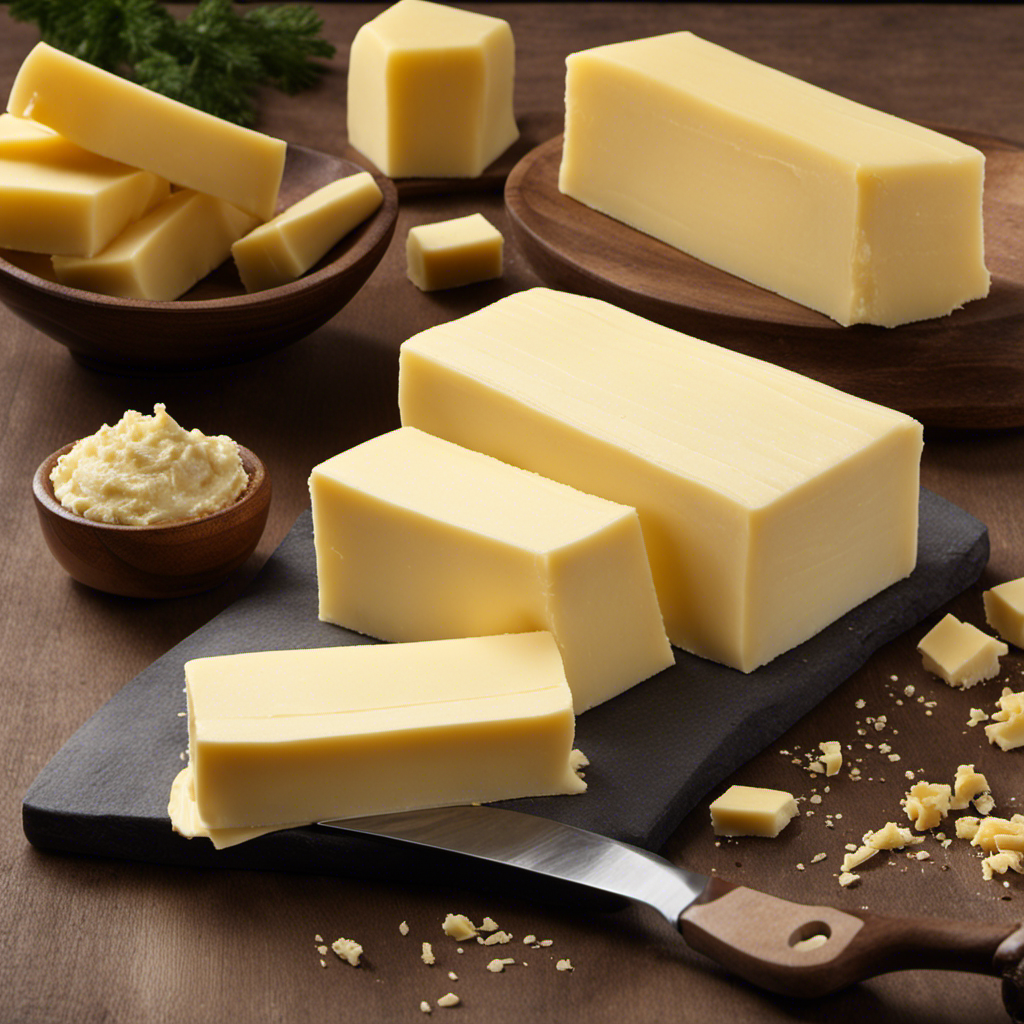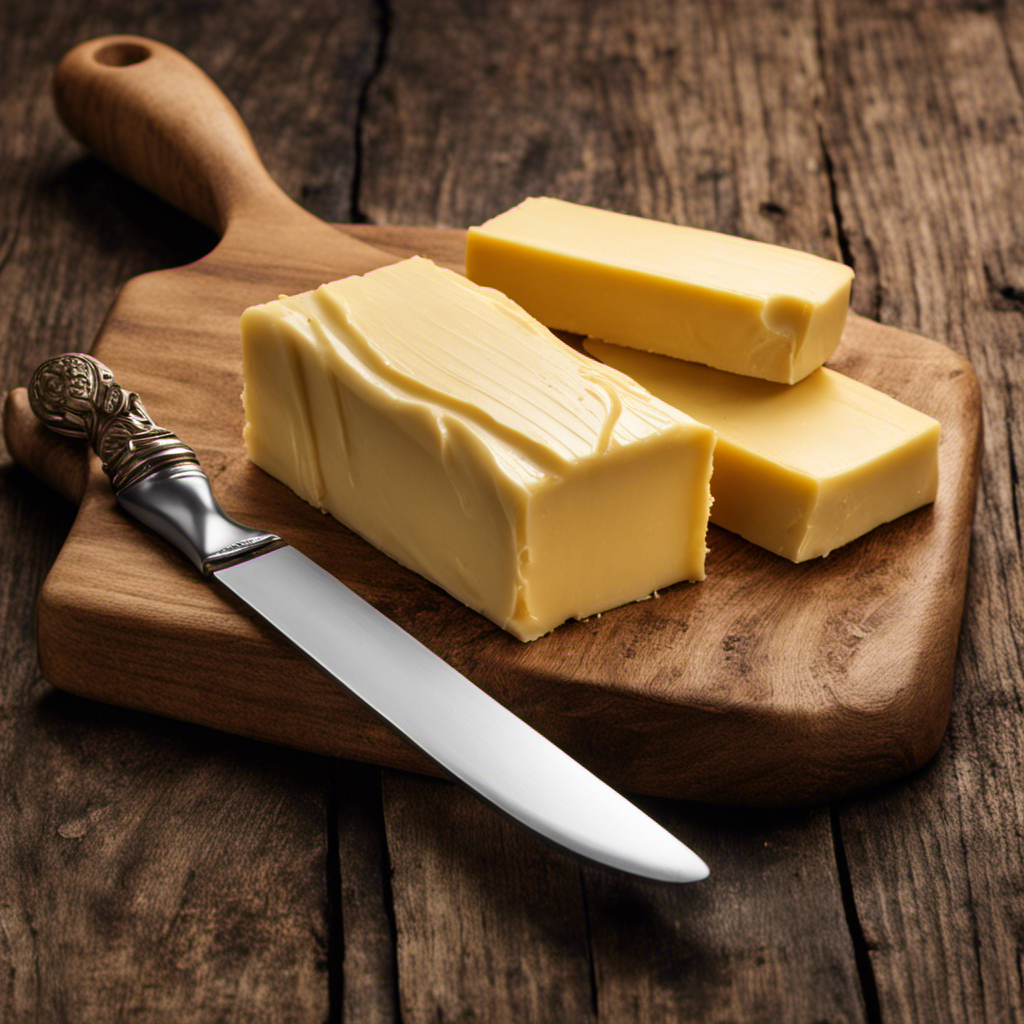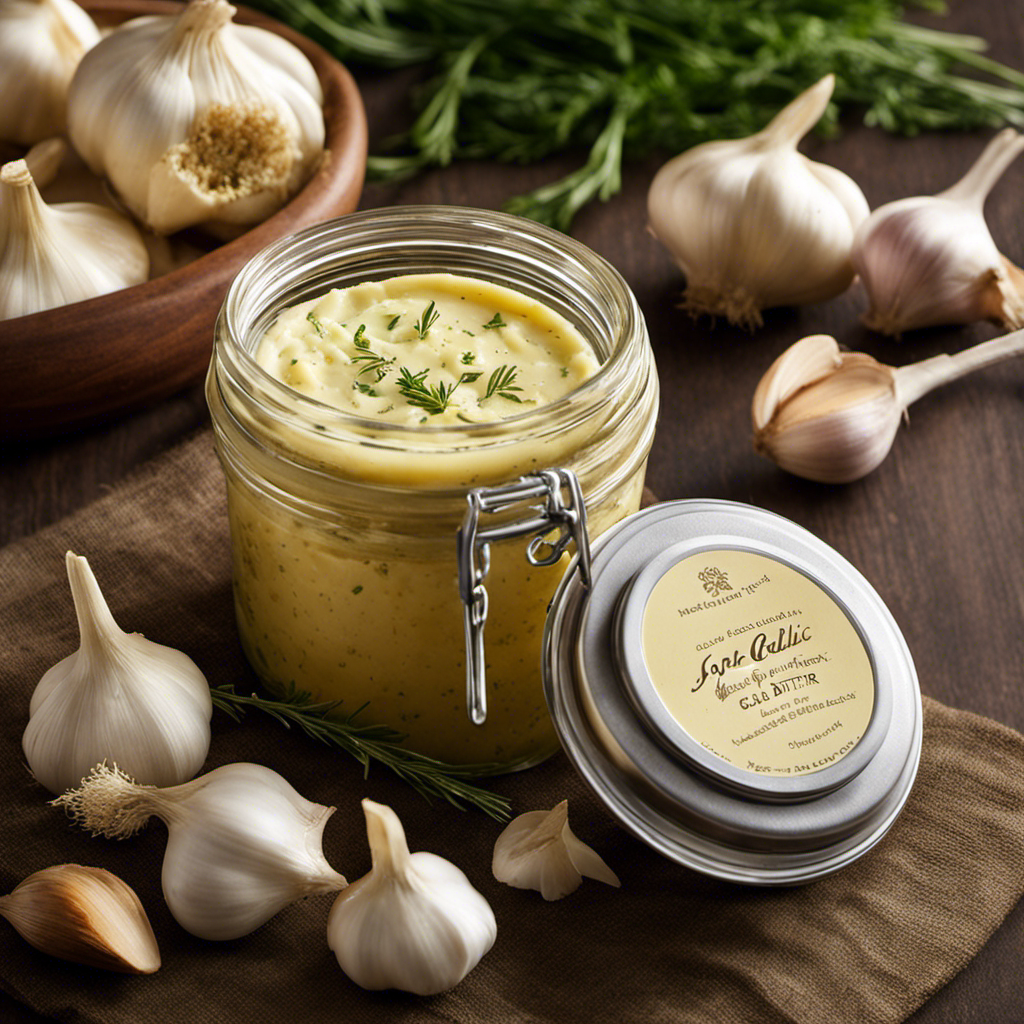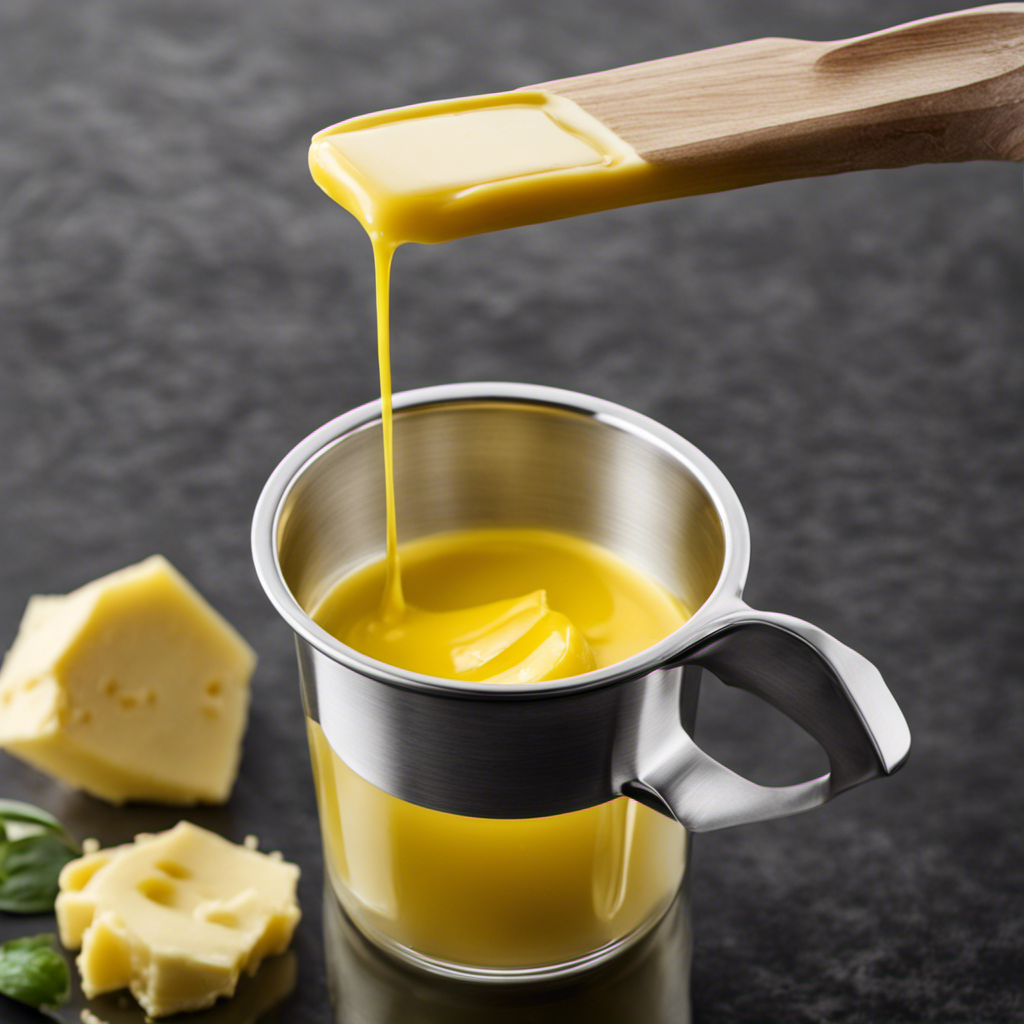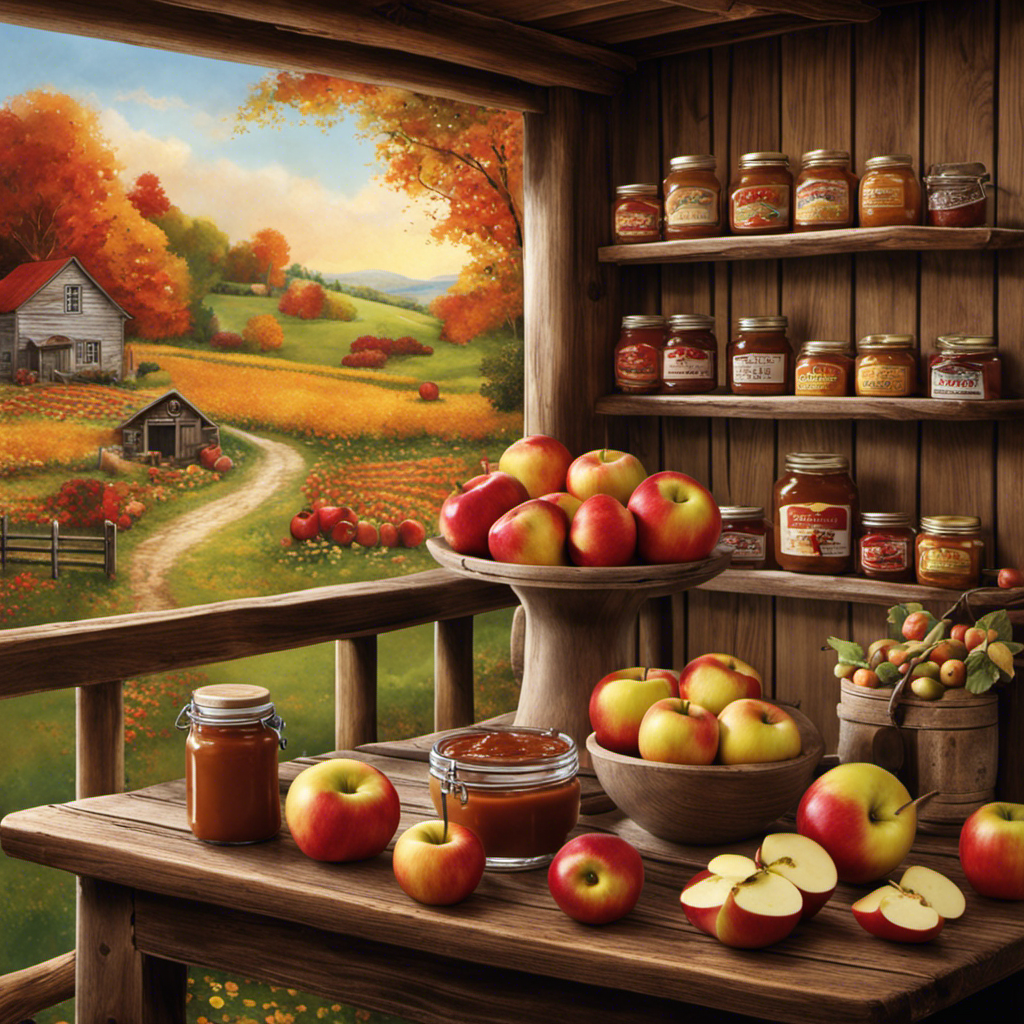Baking has always been a passion of mine, yet the question of how many ounces are in a stick of butter always perplexed me. It appeared to be an easy query, yet I could never quite grasp the answer. This is why I made it my mission to thoroughly explore the realm of butter sizes and definitively resolve this inquiry.
In this article, I’ll be sharing everything I’ve learned about converting ounces to sticks, the importance of knowing butter measurements, and some helpful tips and tricks for accurately measuring butter sticks.
So let’s get started and unravel the mystery of how many ounces are in a stick of butter!
Key Takeaways
- A stick of butter in the United States is equivalent to 4 ounces or 113 grams.
- In some European countries, a stick of butter can weigh up to 8 ounces or 227 grams.
- Converting from ounces to sticks: 1 ounce = 0.25 stick, 2 ounces = 0.5 stick, 4 ounces = 1 stick.
- Butter sticks are commonly sold in packages of four, totaling 1 pound or 16 ounces.
Understanding the Standard Measurement for Butter Sticks
Do you know how many ounces are in a stick of butter? Well, let me break it down for you.
A stick of butter is a common measurement used in many recipes, but the amount of ounces it contains can vary depending on where you are.
In the United States, a standard stick of butter is equivalent to 4 ounces or 113 grams. However, in some European countries, a stick of butter can weigh up to 8 ounces or 227 grams.
It’s important to know these conversions when following recipes from different regions. So, if you come across a recipe that calls for a stick of butter but you only have a different measurement, you can easily convert it using these butter stick equivalents.
Converting Butter Measurements: Ounces to Sticks
There’s a simple conversion for measuring butter from ounces to sticks. Understanding butter packaging can be confusing, especially when recipes call for a specific number of sticks. To help with this, I’ve created a table below that shows the conversion of ounces to sticks:
| Ounces | Sticks |
|---|---|
| 1 | 0.25 |
| 2 | 0.5 |
| 4 | 1 |
Converting butter measurements to grams is also important, especially if you’re following a recipe that uses metric units. To convert sticks of butter to grams, simply multiply the number of sticks by 113.4, as each stick weighs approximately 113.4 grams.
Now that we understand how to convert butter from ounces to sticks, let’s take a closer look at how much butter is in a single stick.
How Much Butter Is in a Single Stick
When it comes to baking, understanding butter measurements is essential.
In this discussion, we will explore the butter stick measurement, the standard size of butter, and how to convert butter quantities.
By learning these key points, you’ll be able to confidently use butter in your recipes and create delicious treats every time.
Let’s dive in and demystify the world of butter measurements!
Butter Stick Measurement
Butter sticks typically contain 8 ounces of butter. They are a common measurement used in recipes and baking. However, it’s important to note that there are a few variations when it comes to butter stick equivalents. Here are some key points to keep in mind:
-
In the United States, butter sticks are typically sold in packages of four, totaling 1 pound or 16 ounces.
-
In some countries, butter sticks may weigh slightly more or less than 8 ounces. It’s always a good idea to check the packaging or consult a conversion chart when using international recipes.
-
If you don’t have butter sticks on hand, you can easily measure out 8 ounces by using a kitchen scale or referencing the measurements on the butter packaging.
Standard Butter Size
To ensure consistency in your recipes, it’s important to use the standard size of butter in your baking. Understanding standard butter packaging is essential for any home baker.
Most butter is sold in rectangular blocks known as sticks. These sticks are typically 4 ounces or 113 grams in weight. They are conveniently wrapped in wax paper or foil, making them easy to measure and use.
However, it’s important to note that butter can also be sold in larger blocks or tubs. These sizes can vary, with some blocks weighing 8 ounces or 227 grams, and tubs containing up to 16 ounces or 454 grams of butter.
When following a recipe, be sure to check the required amount of butter and adjust accordingly to the standard size packaging you have available.
Butter Quantity Conversion
When it comes to baking, understanding butter measurements is essential. Sometimes a recipe may call for a certain amount of butter in ounces, while other times it may require sticks of butter. Converting between these two measurements can be a bit tricky, but with a little knowledge, it becomes much easier.
Here are a couple of helpful tips to keep in mind when converting butter quantities:
- 1 stick of butter is equal to 4 ounces.
- To convert from ounces to sticks, simply divide the number of ounces by 4.
- To convert from sticks to ounces, multiply the number of sticks by 4.
By knowing these conversions, you can easily adapt your recipes to the measurement units you have on hand. This knowledge is crucial for achieving the perfect texture and flavor in your baked goods.
Now let’s dive into the importance of knowing butter measurements and how it can impact your baking.
The Importance of Knowing Butter Measurements
Knowing the measurements of butter is important for accurately following a recipe. When it comes to baking or cooking, precise measurements can make all the difference in the final result.
Butter measurement accuracy is crucial because it affects the texture, taste, and overall outcome of the dish. Whether you’re making cookies, cakes, or pastries, getting the right amount of butter can determine whether your baked goods turn out light and fluffy or dense and heavy.
Using too much butter can lead to greasy or overly rich results, while using too little can make your dish dry or lacking in flavor. So, understanding the importance of precise butter quantities is key to achieving delicious and consistent results in the kitchen.
Common Recipes and Butter Stick Measurements
When it comes to cooking, accurate measurements are essential, especially when it comes to butter.
In this discussion, we will delve into the world of butter measurements, exploring topics such as the Butter Conversion Chart, which can be a helpful tool for converting different butter measurements.
We will also touch on the importance of cooking measurement accuracy and how it can affect the outcome of your recipes, as well as provide tips on substituting butter measurements if you find yourself in a pinch.
Butter Conversion Chart
There’s a helpful butter conversion chart that you can use to find out how many ounces are in a stick of butter. It’s always handy to have this information on hand when following a recipe. Here are some key points to keep in mind:
-
Butter stick equivalents:
-
In the United States, a standard stick of butter is typically 4 ounces or 1/2 cup.
-
In Europe, butter is usually sold in 250-gram blocks, which is equivalent to approximately 8.8 ounces or 1 cup.
-
Converting butter measurements to grams:
-
To convert ounces to grams, multiply the number of ounces by 28.35. For example, 4 ounces of butter is approximately 113.4 grams.
-
To convert cups to grams, the conversion varies depending on the density of the butter. On average, 1 cup of butter is about 227 grams.
Having access to a butter conversion chart can make baking and cooking with butter much easier and more accurate.
Cooking Measurement Accuracy
It’s important to accurately measure ingredients when cooking to ensure the best results. When it comes to understanding butter measurements, it can be a bit confusing. Different recipes may call for butter in various forms, such as sticks, cups, or ounces. To help you navigate through these conversions, here is a handy table:
| Butter Measurement | Equivalent |
|---|---|
| 1 stick of butter | 1/2 cup (8 tablespoons) |
| 1/2 stick of butter | 1/4 cup (4 tablespoons) |
| 1 cup of butter | 2 sticks (16 tablespoons) |
| 1 ounce of butter | 2 tablespoons |
Substituting Butter Measurements
When it comes to baking and cooking, butter is a staple ingredient that adds flavor and richness to our favorite recipes. But what if you don’t have a stick of butter on hand? Don’t worry, there are alternatives and alternative measurements that can be used as a substitute.
Here are a few options to consider:
- Coconut oil: Use 1 cup of solid coconut oil for every 1 cup of butter.
- Margarine: Substitute equal parts of margarine for butter in your recipe.
Alternative butter measurements can also come in handy if you only have a partial stick of butter left. Here are some common conversions:
- 1/2 stick of butter: Equals 1/4 cup or 4 tablespoons.
- 1/4 stick of butter: Equals 1/8 cup or 2 tablespoons.
These substitutes and measurements can help you continue cooking even if you’re out of butter or need to adjust the amount. So go ahead and get creative in the kitchen!
How to Measure Butter Sticks in Ounces
To measure butter sticks in ounces, you can simply multiply the number of sticks by 4. This is a handy conversion to know when following a recipe that calls for ounces instead of sticks. To help you visualize the conversion, here is a table showing the butter measurement equivalents:
| Sticks of Butter | Ounces |
|---|---|
| 1 stick | 4 oz |
| 2 sticks | 8 oz |
| 3 sticks | 12 oz |
| 4 sticks | 16 oz |
Butter Substitutes: Understanding the Ounce to Stick Conversion
Understanding the ounce to stick conversion is crucial when considering butter substitutes. As someone who loves baking, I often find myself searching for alternatives to butter. Here are a few key points to keep in mind when dealing with butter substitutes:
-
Types of Butter Substitutes:
-
Margarine: This is a popular choice that closely resembles butter in taste and texture.
-
Coconut Oil: A great option for vegan or dairy-free baking, coconut oil adds a unique flavor to your recipes.
-
Accurate Measurement Techniques:
-
Use a kitchen scale: Weighing your butter substitute in ounces will give you the most accurate results.
-
Check the packaging: Some butter substitutes come in pre-measured sticks, making it easier to follow recipes.
Tips and Tricks for Accurately Measuring Butter Sticks
Using a kitchen scale is the most accurate way to measure your butter substitutes. When it comes to baking or cooking, precision is key, and measuring butter accurately ensures the best results. But how do you measure butter substitutes? Here are some tips and tricks to help you get it right every time.
First, let’s take a look at a handy table that shows the ounce to stick conversion for different types of butter substitutes:
| Butter Substitute | Ounce | Stick |
|---|---|---|
| Margarine | 4 oz | 1/2 |
| Shortening | 4 oz | 1/2 |
| Coconut Oil | 4 oz | 1/2 |
| Olive Oil | 6 oz | 3/4 |
| Applesauce | 8 oz | 1 |
Now that you have a reference, grab your kitchen scale and measure out the desired amount of butter substitute. This method ensures accuracy and consistency, giving you the perfect outcome for your recipes. So, next time you’re in the kitchen, remember to rely on your kitchen scale for precise measurements of butter substitutes. Happy cooking!
Frequently Asked Questions
What Is the History Behind the Standard Measurement for Butter Sticks?
The history of the standard measurement for butter sticks is quite fascinating. It has evolved over time to become a convenient and consistent way to measure and sell butter.
Can I Use Margarine as a Substitute for Butter in Recipes That Call for a Stick of Butter?
Sure, you can use margarine as a substitute for butter in recipes that call for a stick of butter. It’s a great option for baking and has benefits like being lower in saturated fat. Just remember to use the same amount as the butter called for in the recipe.
How Many Ounces Are in a Half Stick of Butter?
A half stick of butter is usually 4 ounces. When it comes to butter conversion, it’s important to know that a standard stick of butter is 8 ounces or 1/2 cup.
Are There Any Alternative Measurements for Butter Sticks in Countries Outside the United States?
Are there any alternative measurements for butter sticks in countries outside the United States? Well, let me tell you, my friend, there sure are! From grams to tablespoons, there are plenty of butter stick substitutes around the world.
Is It Possible to Measure Butter Sticks Accurately Without Using a Scale?
It’s possible to measure butter sticks without a scale by using a measuring cup with markings for each measurement. To convert stick measurements to ounces, simply multiply the number of sticks by 4.
Conclusion
So, now you know that there are 4 ounces in a stick of butter. It’s a simple conversion that can make a big difference in your cooking and baking.
Some may argue that measuring butter in sticks is outdated and that using a kitchen scale is more accurate. While that may be true, knowing the measurement in sticks can still be helpful, especially when following older recipes or when you don’t have a scale on hand.
So, embrace the stick of butter measurement and enjoy the convenience it brings to your kitchen adventures!
